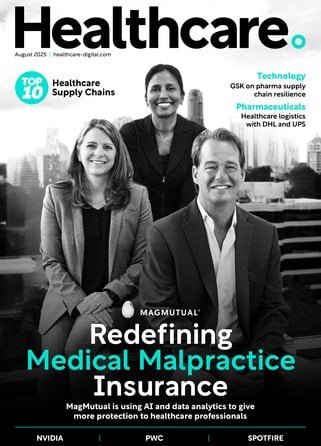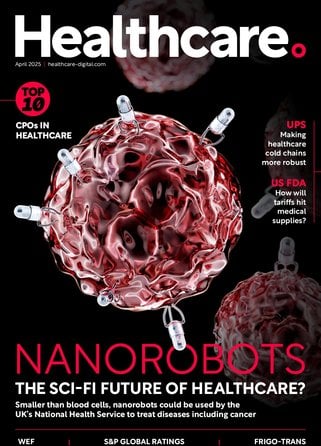Extreme Networks: What can Healthcare Expect from Wi-Fi 7?

Healthcare providers are constantly looking for ways to expand their capabilities in what Gartner calls the Real Time Health System, which is essentially the orchestration of people, process, and technology operating together for improved hospital operations and patient care.
As more connected equipment and medical devices enter the healthcare industry and are put into the hands of clinical staff, wireless networks must continue to evolve, as they are critical for continuously delivering seamless and innovative patient care.
Bob Zemke CISSP, CPHIMS, Director at Extreme Networks installed his first wireless network in a hospital 20 years ago.
“Our capabilities then were a fraction of what they are today, both in terms of Wi-Fi capabilities and those of the few connected solutions in A&E departments at the time,” he says. “Think back to what technology in patient care looked like in those first years after Y2K: No iPhones, very little telemedicine, no guest Wi-Fi, and most devices connected via Ethernet.”
Wi-Fi 7 has the potential to take patient experiences to the next level in the digital age, with the promise of enhanced connectivity, reliability and efficiency across healthcare facilities. This will create a new foundation of mobile first mindset in healthcare that will drive new innovations.
So, what can the healthcare industry expect from Wi-Fi 7, and what will it mean for day-to-day functions? Bob sat down with Healthcare Digital to explore the possibilities.
What is Wi-Fi 7 and how does it differ from Wi-Fi 6E?
Introduced in early 2024, Wi-Fi 7 is the latest Wi-Fi standard, dubbed “Extremely High Throughput.” While Wi-Fi 6 introduced OFDMA for better speed, and Wi-Fi 6E increased capacity with the 6 GHz band, Wi-Fi 7 tackles limitations like latency (response time) through a technology called multi-link operation (MLO). MLO allows for switching between bands seamlessly, maintaining smooth connections in congested environments.
Additionally, Wi-Fi 7 boasts features like 4K QAM for faster data, wider channels for handling more traffic, and improved management of multiple devices – thus earning the “Extremely High Throughput” moniker. This is particularly attractive to industries that deal with large quantities of data and require consistent performance to support systems like patient telemetry, multicast video and Nurse Call systems. We hear a lot about 5G being the future of medical device connectivity, but I disagree. Wi-Fi 7's speed, reliability and capacity enable organisations to take a significant step forward in wireless connectivity while still supporting legacy device connectivity, helping deliver better care for patients and improving operations for staff.
How can Wi-Fi 7 better everyday healthcare operations?
One of the key benefits that Wi-Fi 7 unlocks for healthcare organisations is its ability to improve network performance, building upon the foundation laid by Wi-Fi 6E. With higher throughput and lower latency, Wi-Fi 7 ensures seamless connectivity for medical and patient devices, enabling real-time data transmission - which is absolutely critical for monitoring patient health and delivering timely interventions. What’s more, the ultra-wide 320 MHz channels can transmit significantly more data, facilitating the integration of advanced healthcare applications such as virtual reality (VR) and augmented reality (AR).
These technologies have the potential to improve patient experiences significantly by offering immersive simulations for things like training healthcare professionals and providing interactive educational materials for patients. To see what the future holds in this area, look at Professor Shafi Ahmed, M.D., PH.D, currently a surgeon at The Royal London and St. Bartholomew’s Hospitals and CEO of Medical Realities. His groundbreaking work with AR/VR in clinical settings is entering the mainstream and will require the level of network bandwidth and reliability that Wi-Fi 7 can easily support.
Careful planning and infrastructure upgrades are required to fully embrace the benefits of Wi-Fi 7. Collaborating with experienced Wi-Fi professionals can ensure a smooth transition and maximise the technology's potential. Ultimately, the most streamlined hospitals are working with their technology partners to proactively configure Wi-Fi networks to meet evolving expectations and unlock new possibilities for innovation, efficiency, and patient care.
What are some real-world examples of how Wi-Fi 7 will help improve delivery of patient care?
Healthcare organisations such as the NHS rely on network connectivity to serve as the central nervous system of their operations for seamless services delivery. While Wi-Fi 7 is a relatively new technology and widespread adoption in healthcare facilities is still ongoing, there are promising signs of its potential impact on patient care. Here are some real-world examples (or situations likely to occur soon) based on its capabilities:
- Training: The scalability and flexibility of Wi-Fi 7 could be instrumental in supporting new healthcare training initiatives. Reliable and high-speed connections are crucial for remote instruction and training in AR/VR.
- Accessibility: Healthcare providers can break down barriers by adding things like instant translation devices in emergency rooms, patient rooms and waiting areas, helping ensure patients who speak a different language or who are Deaf to receive the same quality of patient care without delay. Wi-Fi 7 can help ensure the performance of those devices without an impact on existing network bandwidth.
- Enhanced patient quality of life: More hospitals are adding things that enhance patient quality of life, including game rooms and entertainment streaming. Wi-Fi 7 will help ensure patients can watch things like the World Cup without impacting the hospital network or missing key match moments due to lag.
In all of these examples, the most important benefit of Wi-Fi 7 is that the network is ready. Healthcare providers can add all these services and more without requiring more network upgrades or fixes, ensuring that future projects can move forward without surprise costs or delays.
Wi-Fi 7 presents a promising outlook for the future of healthcare connectivity. Its potential benefits include faster data transmission for critical tasks, improved efficiency for healthcare workers through reliable access to resources, and the ability to integrate new healthcare applications. These advancements could contribute to enhanced patient care, increased staff productivity, and a healthcare system that adapts to evolving medical technology.
**************
Make sure you check out the latest industry news and insights at Healthcare Digital and also sign up to our global conference series - Tech & AI LIVE 2024
**************
Healthcare Digital is a BizClik brand
*************




